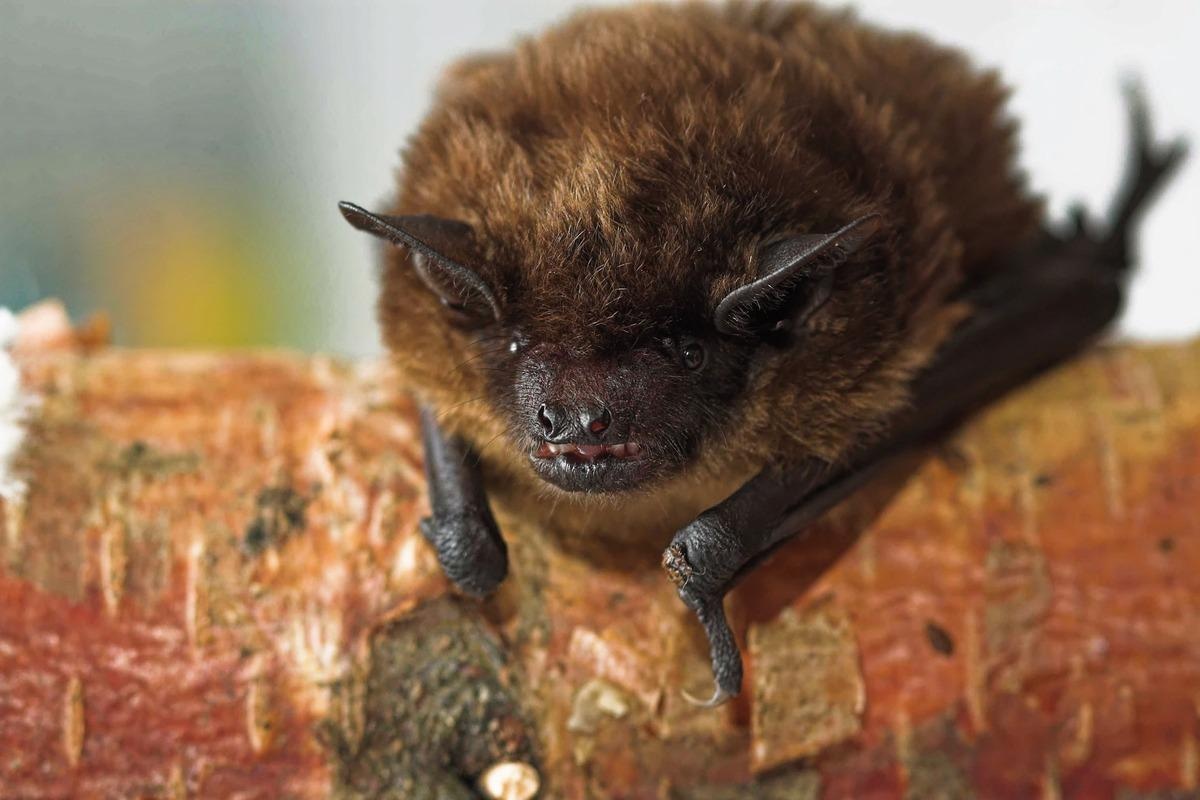Coronaviruses from bats have spilled over into human populations several times. These spillovers most likely will continue to be a public health threat.
 Study: Ecology, evolution and spillover of coronaviruses from bats. Image Credit: Colin Seddon/Shutterstock
Study: Ecology, evolution and spillover of coronaviruses from bats. Image Credit: Colin Seddon/Shutterstock
In a review published in Nature Reviews Microbiology, the authors collate information about the ecology and evolution of bat coronaviruses. They also discuss the spillover of these coronaviruses from bats to other hosts, including humans.
Distribution of bat coronaviruses
Coronaviruses have been detected in 16% of bat species. There are 21 bat families, and alphacoronaviruses and beta coronaviruses have been detected in 14 bat families in at least 69 countries across six continents. The apparent absence of coronaviruses in particular bat families is likely due to insufficient sampling rather than true absence.
Viruses with high sequence similarity to the three recently emerged human coronaviruses have all been identified in bats. These include severe acute respiratory syndrome coronavirus (SARS-CoV), SARS-CoV-2, and Middle East respiratory syndrome coronavirus (MERS-CoV).
Coronavirus infection in bats
Are bat species universally tolerant of coronavirus infections?
There have been very few studies. In bats experimentally infected with coronaviruses, some bats have shown mild tissue damage, swelling of the nasal mucous membrane, and lung infection. The virus or viral RNA could be detected in the respiratory tract and/or intestines. However, the infected bats did not exhibit evident clinical signs of infection.
What are the immune responses of bats to coronavirus infections?
There are very few studies, and bats do not always produce antibodies against the virus after infection. Bats have limited humoral responses, making it difficult to use serum antibody levels to identify infections by certain pathogens.
In bats, coronaviruses may have the ability to infect the respiratory tract and the gastrointestinal tract. Several in vitro studies provide insights into the spillover potential of specific viruses, but they provide limited insight into bat susceptibility at the organismal level.
Moreover, studies making such inferences should be interpreted with caution because whether those viruses cause persistent infections in bats cannot be predicted without in vivo studies.
Prevalence of coronaviruses in bat populations
The prevalence of coronaviruses is estimated by the proportion of bats with detectable viral RNA in feces or fecal or oral swabs. These data show high temporal and spatial variability. The shedding of coronaviruses peaks during summer or autumn in Australia and China, dry seasons in central Africa and Asia, and wet seasons in western or south-eastern Africa. Although trends differ, seasonal variations are consistently observed among different studies. Thus, the seasonal variations observed are most likely due to resource availability, reproductive cycles, and host behavior.
Nutritional stress during periods of resource scarcity has been implicated in the shedding of other bat viruses. Moreover, the effects differ by bat species and virus variants. Bat colony size, density, and composition could also affect virus prevalence by changing transmission rates. Multiple bat species often roost together. This affects the viral infection of different bat hosts.
Roost size and location seem to affect the chance of spillover of viruses between host species. If the roost is dense, the chances of spillover are high and vice versa. Reproductive cycles also influence the prevalence and transmission of viruses in bat colonies. There may be age-related differences in susceptibility and competence of infection.
Co-infections in bats
Co-infections with multiple pathogens can influence transmission to other bats and spillover hosts. Cross-protective immunity from infection by related pathogens might reduce susceptibility or transmission. Conversely, trade-offs in an immune response against one pathogen might increase susceptibility and facilitate the transmission of another. Co-infection of bats with multiple coronaviruses simultaneously, or co-circulation of multiple virus genotypes within a roost, might result in interactions that affect the timing, location, and intensity of virus shedding.
Viral genetic diversity and evolution
Coronaviruses have the largest genome among RNA viruses. Mutations and recombinations generate genetic diversity, expanding viral evolution and increasing the potential for shifts in the types of cells infected, host range, and pathogenicity.
Host receptor recognition
Coronaviruses enter the host cell because of the spike protein. The receptor-binding domain (RBD) of the spike protein binds to the host receptor. HCoV-NL63, SARS-CoV, and SARS-CoV-2 bind angiotensin-converting enzyme 2 (ACE2).
The interaction between RBD and the host receptor is like a key and a lock. The specific structures of the virus RBD and the host receptors partly determine the capacity for infection of different hosts. Thus, direct coronavirus spillover from bats to other mammals would therefore be regulated by the host-cell receptor structures and viral RBD identity.
Virus evolution that facilitates the binding of human receptors may diminish the binding of the original host receptors. This host shift may favor sustained human-to-human transmission and is characteristic of pandemic viruses.
The distribution of the host receptors within cell types in a host decides the tissues that will be infected. This impacts pathogenesis and transmission. In humans, ACE2 is expressed primarily in epithelial cells of many tissues, including the respiratory tract, kidney, heart, and digestive tract. Therefore, SARS-CoV-2 has a multisystemic pathology.
Host proteases
In addition to the receptors, host proteases are needed to activate the virus spike protein to enable entry. This cleavage may determine zoonotic viral potential and human-to-human transmissibility. Spike proteins of coronaviruses have multiple cleavage sites for host proteases. The distribution and activity of these proteases differ among cell types and physiological conditions. Therefore, the expression patterns of proteases also contribute to the host range of coronaviruses.
Factors affecting spillover
Human–bat interactions differ in space, time, nature, and intensity. Some bat species rarely encounter humans, whereas others have frequent contact. Land-use change, animal farming, and domestication, and human encroachment into wildlands have been linked to the emergence of infectious diseases. Changes in the quality of bats’ habitat may also affect their overall health and viral circulation due to stress. Low food availability mediated by climate change and deforestation also increases viral shedding. It is observed that coronavirus shedding in horseshoe bats is higher in human-dominated landscapes than in natural landscapes.
Additionally, the legal and illegal wildlife trade results in the transport of viruses over long distances along with the hosts that are kept in stressful and unsanitary conditions, likely increasing shedding and transmission.
Direct bat-to-human spillover
There is no conclusive evidence of direct bat-to-human spillover infections by coronaviruses. This is probably due to inadequate surveillance rather than to a true absence of spillovers. Infections occur in rural areas or in low-resource countries, where human–bat contacts might be common possibly go undetected. Also, infections by some bat coronaviruses might be asymptomatic in humans or might be mistaken for other common diseases.
Very few human exposures lead to infection and even fewer to further transmission. Studies indicate that these viruses are not efficiently spreading among humans.
Spillover through intermediate hosts
Other animals may provide opportunities for coronavirus transmission from bats to humans. Once infected from bats, bridging hosts may promote virus spread to humans through increased exposure or high viral loads. This will lead to a higher probability of human exposure to infectious doses of the viruses. Moreover, bridging hosts may also enable viral evolution that results in new or enhanced zoonotic capacity.
The ecological and evolutionary conditions that facilitated the spillover of SARS-CoV-2 remain unknown. The first SARS-CoV-2 transmission event may have happened directly from bats or through a bridging host. Most likely, it was a direct bat-to-human transmission.
Humans can also act as bridging hosts. Humans have infected domestic cats and dogs with SARS-CoV-2, potentially acting as reservoirs for new variants. This evidence of reverse zoonosis or spillback requires further research to illustrate the potential of other wild animal species to become new viral reservoirs.
-
Ruiz-Aravena, M., McKee, C., Gamble, A. et al. (2021) Ecology, evolution and spillover of coronaviruses from bats. Nature Reviews Microbiology. doi: https://doi.org/10.1038/s41579-021-00652-2 https://www.nature.com/articles/s41579-021-00652-2
Posted in: Medical Science News | Medical Research News | Disease/Infection News
Tags: ACE2, Angiotensin, Angiotensin-Converting Enzyme 2, Antibodies, Antibody, Cell, Climate Change, Coronavirus, Coronavirus Disease COVID-19, Enzyme, Evolution, Food, Gastrointestinal Tract, Genetic, Genome, Heart, Immune Response, immunity, in vitro, in vivo, Infectious Diseases, Kidney, Membrane, MERS-CoV, Microbiology, Pandemic, Pathogen, Pathology, Protein, Public Health, Receptor, Research, Respiratory, RNA, SARS, SARS-CoV-2, Severe Acute Respiratory, Severe Acute Respiratory Syndrome, Spike Protein, Stress, Syndrome, Virus, Zoonosis

Written by
Dr. Shital Sarah Ahaley
Dr. Shital Sarah Ahaley is a medical writer. She completed her Bachelor's and Master's degree in Microbiology at the University of Pune. She then completed her Ph.D. at the Indian Institute of Science, Bengaluru where she studied muscle development and muscle diseases. After her Ph.D., she worked at the Indian Institute of Science, Education, and Research, Pune as a post-doctoral fellow. She then acquired and executed an independent grant from the DBT-Wellcome Trust India Alliance as an Early Career Fellow. Her work focused on RNA binding proteins and Hedgehog signaling.
Source: Read Full Article
